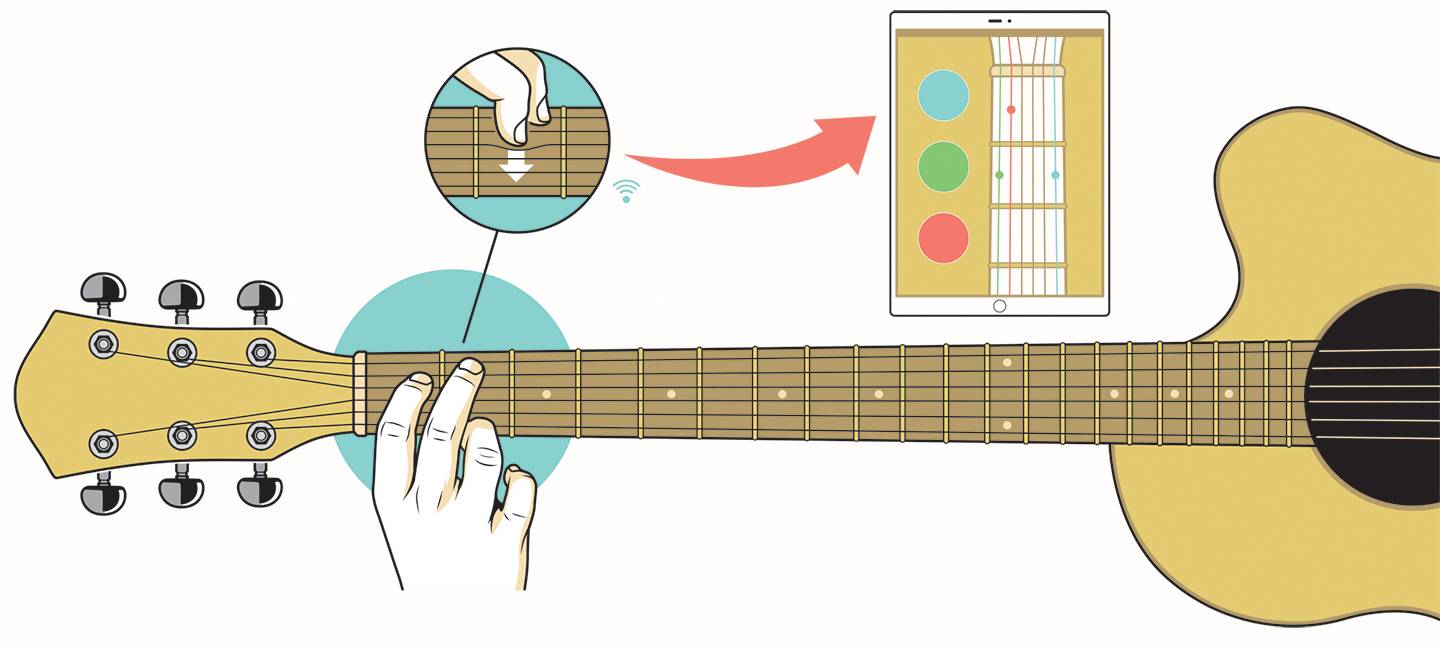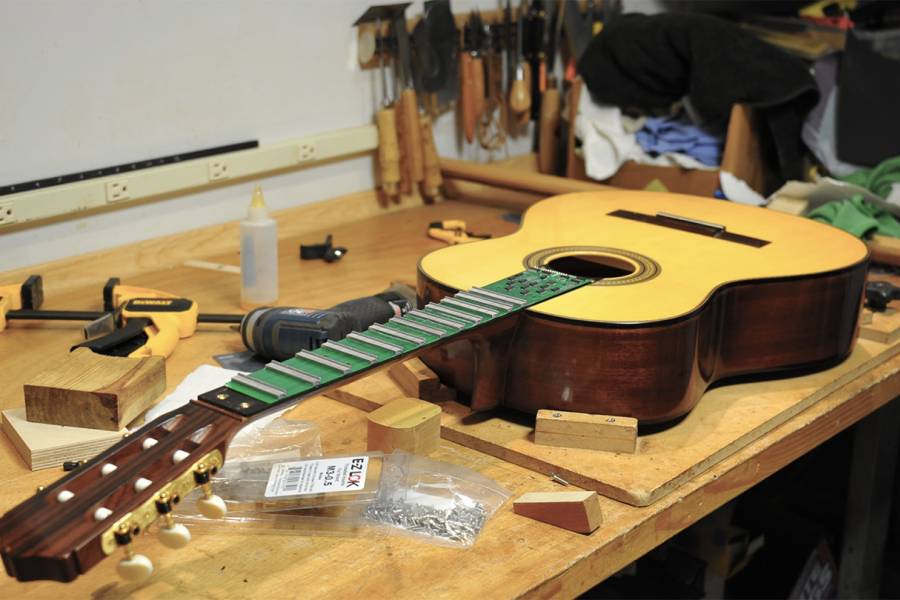Over lattés a couple of blocks from Peabody Institute, medical doctor and guitarist Serap Bastepe-Gray tells the cautionary tale of Kevin the College Student, a stand-in for one of many she sees as co-founder of the Johns Hopkins Center for Music and Medicine. Kevin tends to use too much force to push down the strings when playing the guitar. Given all the practice hours he puts in and his work-study job stacking books at the library, it's no wonder he injured his forearm and hand muscles. Typically, Bastepe-Gray says, Kevin would go to physical therapy or occupational therapy, the tissue would heal, and he'd return to playing. All good, right? "But there's a link missing," Bastepe-Gray explains. When Kevin picks up his instrument again, what's to prevent him from making the same mistake?

Image credit: T.M. Detwiler
Bastepe-Gray, Peab '96, '99 (MM), is working with a team of faculty and students in Mechanical Engineering to create a line of commercial "smart" string instruments, starting with their SmartGuitar, that will measure the precise point at which musicians exert too much (or too little) force, such as when pushing a string toward the fret board. The technology will train users, from novice to virtuoso, to adjust their technique to minimize the risk of injury and improve performance.
Ripe for injury
An estimated four out of five professional musicians will get injured at some point in their career, and guitarists are particularly vulnerable, Bastepe-Gray says. The instrument has taut strings that are under a lot of pressure. The player's left hand movements and grip patterns are complex, she says, requiring them to apply quick and sometimes high forces onto the fret board. Moreover, "as long as you want that sound to continue, you have to keep pushing down—hopefully with the minimum amount of force necessary—but you have to keep pushing down."
A smarter guitar
Bastepe-Gray and her team first experimented with a device that could be clipped onto an existing instrument, but it reduced the distance between the fret and the string, which in turn created an inauthentic experience and impacted the quality of the sound. "Anything you add in there, it's so small, it actually changes the biomechanics," she says, not to mention the mechanics of the instrument itself. They had to start from scratch, creating a custom instrument that looks and feels like a traditional guitar. The product, which won best mechanical engineering project at the Whiting School's Design Day in May, includes location-specific sensors built into the fret board that measure the newtons of force applied to each fret-string intersection. "It's measuring the forces applied by a single finger, which is a big deal in strings," she says. "In guitar, you push two fingers down on one string, and you're just going to get one sound. One finger could be pushing harder than the other, and nobody's the wiser." Currently, the tech only measures the fretting hand, but the hope is to expand it to the plucking hand in the future.
Immediate feedback
The data collected from the SmartGuitar—and eventually the SmartViolin, SmartViola, or SmartCello—are transmitted from a USB port in the instrument to a graphic interface in real time. Musicians may be prompted to play a scale or song to see how they stack up, note by note, against several dozen experts. Onscreen, the strings on the fretboard may light up blue if the player is not pushing down enough; green if they're lining up alongside the experts; or red if they're in the danger zone, using too much force and risking injury. An at-home version for novice players would transmit SmartGuitar data via Bluetooth to a smartphone or tablet. Play too softly and the colorful balloon graphic on the screen won't fully inflate; exert too much force and it will pop. By targeting musicians from the first time they pick up an instrument, the team hopes to teach textbook form long before Kevin would need to seek medical treatment.
Posted in Health, Science+Technology
Tagged mechanical engineering, center for music and medicine









